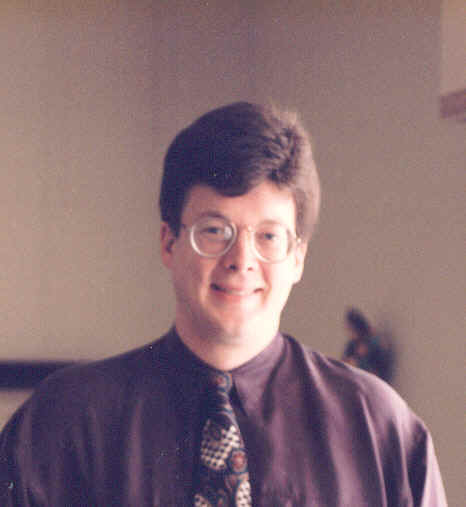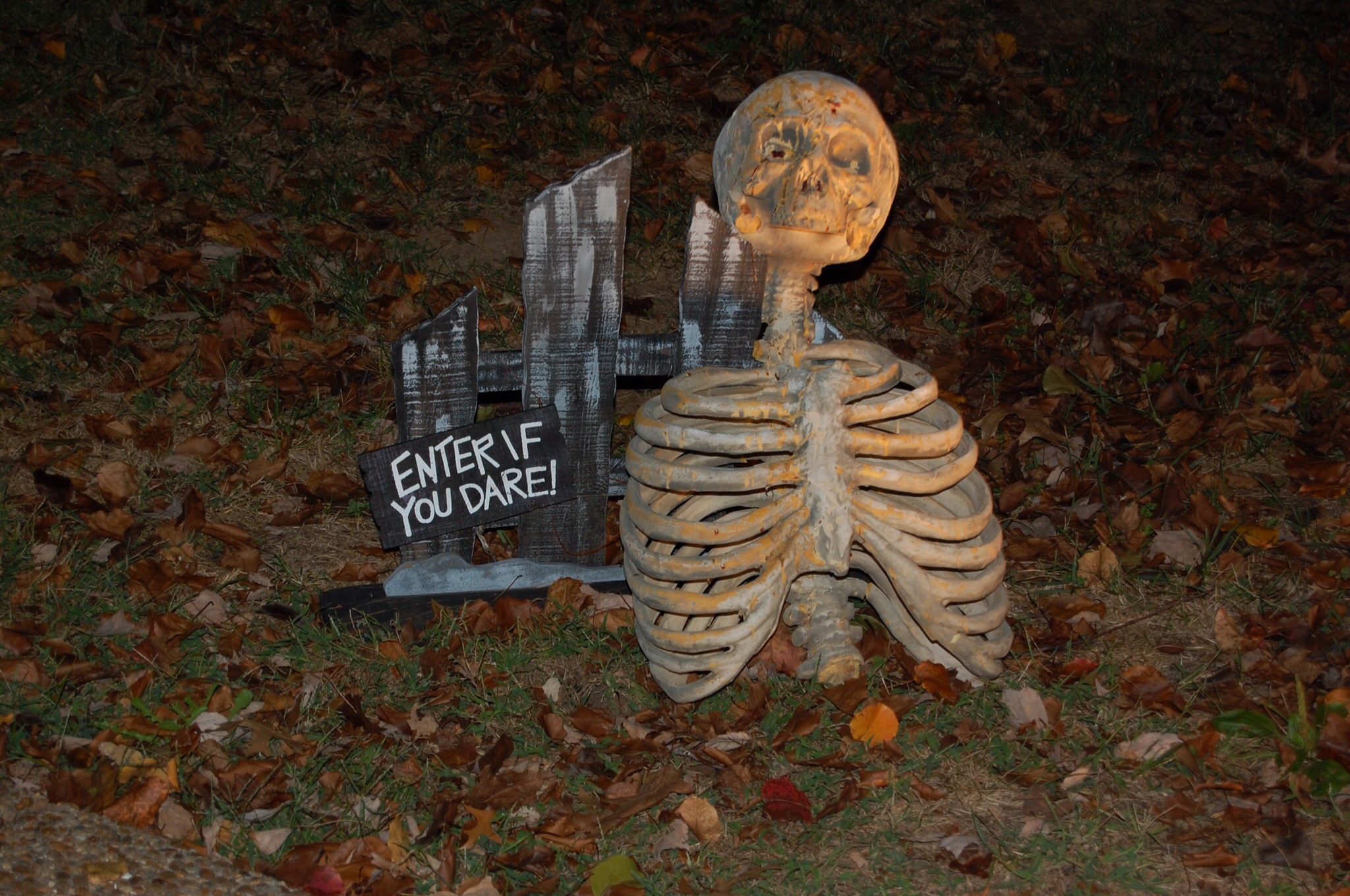The HyperTexts
"Thin Kin"
by Michael R. Burch
Form, Theme, Analysis and Meaning, Tone, Diction and Literary Devices

"Thin Kin" is a Halloween poem which makes the
observation that one day we will all become skeletons. When we do, the poem
asks, will we frighten the other skeletons the way they frighten us today?
"Thin Kin" is the #11 monster poem of all time, according to Aesthetic
Poems.

The picture above was taken in the front-yard "graveyard" of our house
on Halloween. The
children in our neighborhood call our house the "Halloween House" and it has
been on the front page of the local newspaper in the past. I wrote "Thin Kin" to go with the ghoulish picture
above. It is a bit spooky to
consider that one day we will all be skeletons!
Thin Kin
by
Michael R. Burch
Skeleton!
Tell us what you lack ...
the ability to love,
your flesh so slack?
Will we frighten you,
grown as pale & unsound,
when we also haunt
the
unhallowed ground?
Form, Theme, Analysis and Meaning: "Thin Kin" is a lyric poem about
living in a world where one day we will all become skeletons, unless we are
cremated, in which case we will become ashes. That's not much of an improvement! The poem's main theme is the
irony that we will become something that we consider so spooky and unnerving.
Will we frighten the other skeletons when we join them in the graveyard? Or will
we all adapt to our new reality? Should we be afraid of our "thin kin," really?
Tone: The poem's tone is dark but humorous. There is a bit of
sexual humor, as "flesh so slack" suggests that something is missing that would
be required in order to make love.
Diction: The poem's language is on the dark/creepy side with
words like "lack," "slack," "pale," "unsound," "haunt" and "unhallowed ground."
Literary Devices: The poem’s primary literary devices are
meter, rhyme, alliteration, imagery and metaphor/symbolism.
The poem employs alliteration, primarily of "l" and "s" sounds.
The poem employs imagery, with words that give impressions of thinness such as
"thin," "lack," "slack," "pale" and of course "skeleton."
A graveyard is, of course, a metaphor for death.
For a fairly short poem there is quite a bit going on. I hope you liked
the poem and thanks for taking the time to get this far, if you got here!
Bio:
Michael R. Burch is an American poet who lives in Nashville, Tennessee with his
wife Beth, their son Jeremy, and three outrageously spoiled puppies. His poems, epigrams, translations, essays, articles,
reviews, short stories and letters have appeared
more than 9,000 times in publications which include TIME, USA Today, The Hindu,
BBC Radio 3, CNN.com, Daily Kos, The Washington Post, Light Quarterly, The Lyric, Measure, Writer's Digest—The Year's Best Writing,
The Best of the Eclectic Muse, Unlikely Stories and
hundreds of other literary journals, websites and blogs. Mike Burch is also the
founder and editor-in-chief of The HyperTexts, a former columnist for the Nashville City Paper and, according to Google's
rankings, a relevant online publisher of poems about the Holocaust,
Hiroshima, the Trail of Tears, Darfur, Haiti, Gaza
and the Palestinian Nakba. He has two published books,
Violets for Beth (White
Violet Press, 2012) and
O, Terrible Angel (Ancient Cypress Press, 2013).
A third book, Auschwitz Rose, is still in the chute but long delayed.
Burch's poetry has been translated into fourteen languages and set to music by
nine composers. His poem "First They
Came for the Muslims" has been adopted by Amnesty International for its
Words That Burn anthology, a free online resource for
students and educators. Burch has also served as editor of International
Poetry and Translations for the literary journal Better
Than Starbucks.
For an expanded bio, circum vitae and career timeline of the poet, please click here: Michael R. Burch Expanded Bio.
Related Pages:
"Davenport Tomorrow" Analysis,
"Epitaph" Analysis,
"Neglect" Analysis,
"Passionate One" Analysis,
"Something" Analysis,
"Self Reflection" Analysis,
"Will There Be Starlight" Analysis,
"Pale Though Her Eyes" Analysis,
Literary Criticism
The HyperTexts
